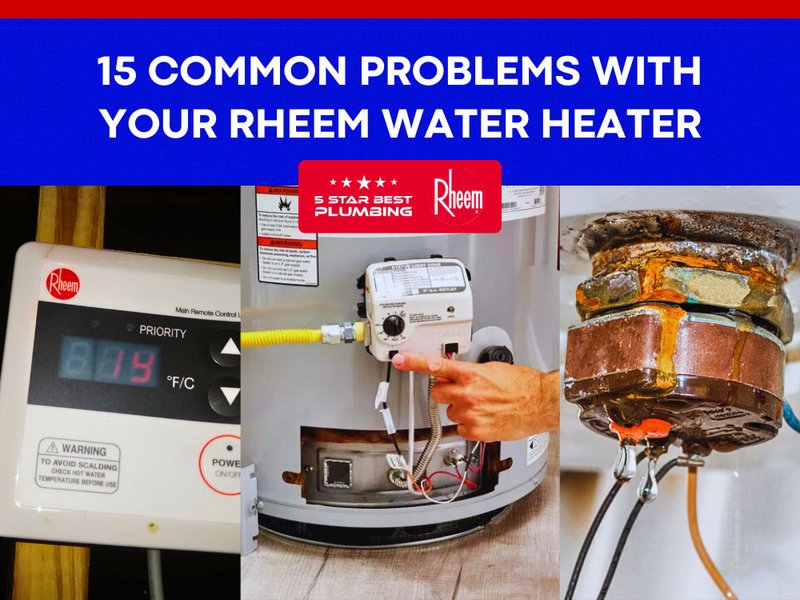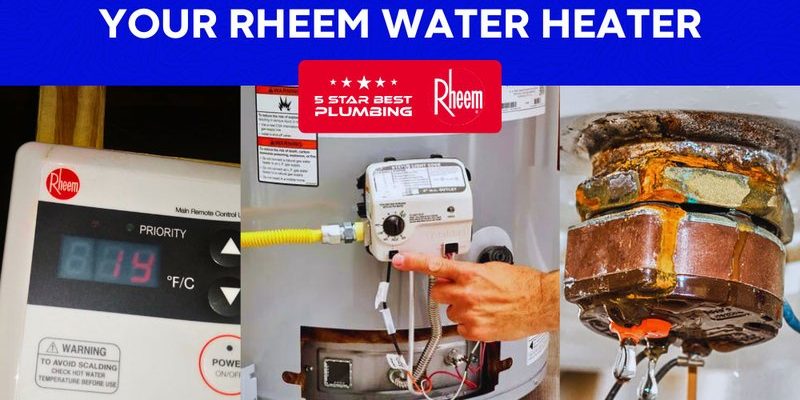
Error E3 on a Rheem water heater isn’t just a random occurrence. It’s like the check engine light in your car, signaling that the unit isn’t functioning properly. Specifically, this code often indicates issues with temperature sensing or the thermostat. Ignoring it can be tempting, especially if it doesn’t seem like a big deal right now, but unresolved issues can lead to bigger, more expensive problems down the line. Let’s think of it like a leaky roof. It might start as a small drip, but if you leave it unattended, it could lead to major water damage.
Understanding Error E3 on Rheem Water Heaters
Error codes can seem like jargon, but they exist to communicate specific problems. In the case of Error E3, it generally means there’s a problem with the water heater’s temperature sensors. Imagine these sensors as the thermostat in your home; they gauge how warm or cold the air is. If something goes wrong, the sensor could misread the temperature and cause the heater to either overheat or not heat at all. Essentially, the system gets confused about how hot the water should be.
When the temperature sensors misbehave, it could be due to wiring issues, faulty sensors, or even something as simple as a disconnected wire. Think about tangled headphones that prevent your music from playing smoothly—it’s annoying and needs untangling. Likewise, some troubleshooting might be needed to resolve the E3 error. Leaving it unresolved could strain the entire water heater system, causing it to operate inefficiently or even fail entirely.
If you’re not familiar with how water heaters work, understand that they rely on a delicate balance of temperature control to provide you with consistent hot water. When an error like E3 pops up, that balance is disrupted, potentially leading to inconsistent water temperatures. No one enjoys an unexpected cold shower—or worse—a scalding one. Recognizing and addressing these kinds of errors will not only restore that balance but also extend the lifespan of your water heater.
Consequences of Ignoring Error E3
So, what happens if you pretend that Error E3 doesn’t exist? Well, think of it like ignoring a toothache. At first, you might handle it with a bit of discomfort, but over time, untreated issues can lead to severe pain or infection. Similarly, ignoring Error E3 can lead to a cascade of failures. The water heater could start consuming more energy as it struggles to maintain temperature, leading to higher utility bills. You might notice that your once-reliable appliance now delivers water at inconsistent temperatures or, worse, stops providing hot water altogether.
Additionally, if the problem causing the E3 error isn’t fixed, it could potentially damage other components of the water heater. For instance, overheating could stress various parts, reducing their lifespan. Imagine running your car’s engine at full throttle for too long—it’s bound to break down sooner rather than later. Similarly, your water heater could face premature wear and tear, possibly leading to more costly repairs or even the need for a replacement.
Ignoring this error also poses safety risks. In extreme cases, overheating might lead to pressure buildup inside the tank, creating a hazardous situation. Not addressing the E3 error increases the chances of more significant malfunctions or even safety hazards. Thus, it’s crucial to address the issue at the earliest to ensure both safety and efficiency in your household.
Steps to Address and Prevent Error E3
Now that you understand the importance of fixing Error E3, let’s talk solutions. First off, consult the user manual for your specific Rheem water heater model. It often contains troubleshooting steps tailored to your unit. You might be instructed to check connections, reset the system, or even replace a faulty sensor. If the manual feels like gibberish, don’t hesitate to reach out to a professional technician. They’re like detectives for appliances, quickly identifying the root cause and providing the right fix.
As a preventive measure, regular maintenance can do wonders. Schedule routine check-ups for your water heater—think of it like going for a dental cleaning. These check-ups can help spot potential issues before they escalate, ensuring the system’s longevity and reliability. Also, make it a habit to note down any unusual behaviors in your unit, like strange noises or unexpected temperature changes. Early detection is often key to preventing bigger problems.
Finally, consider investing in a smart thermostat or advanced temperature sensors. These devices can provide more precise temperature management and alert you to problems early. It’s like having a fitness tracker for your water heater, keeping it in optimal shape. With these steps and a bit of vigilance, you can keep your Rheem water heater running smoothly and avoid those dreaded cold showers!
